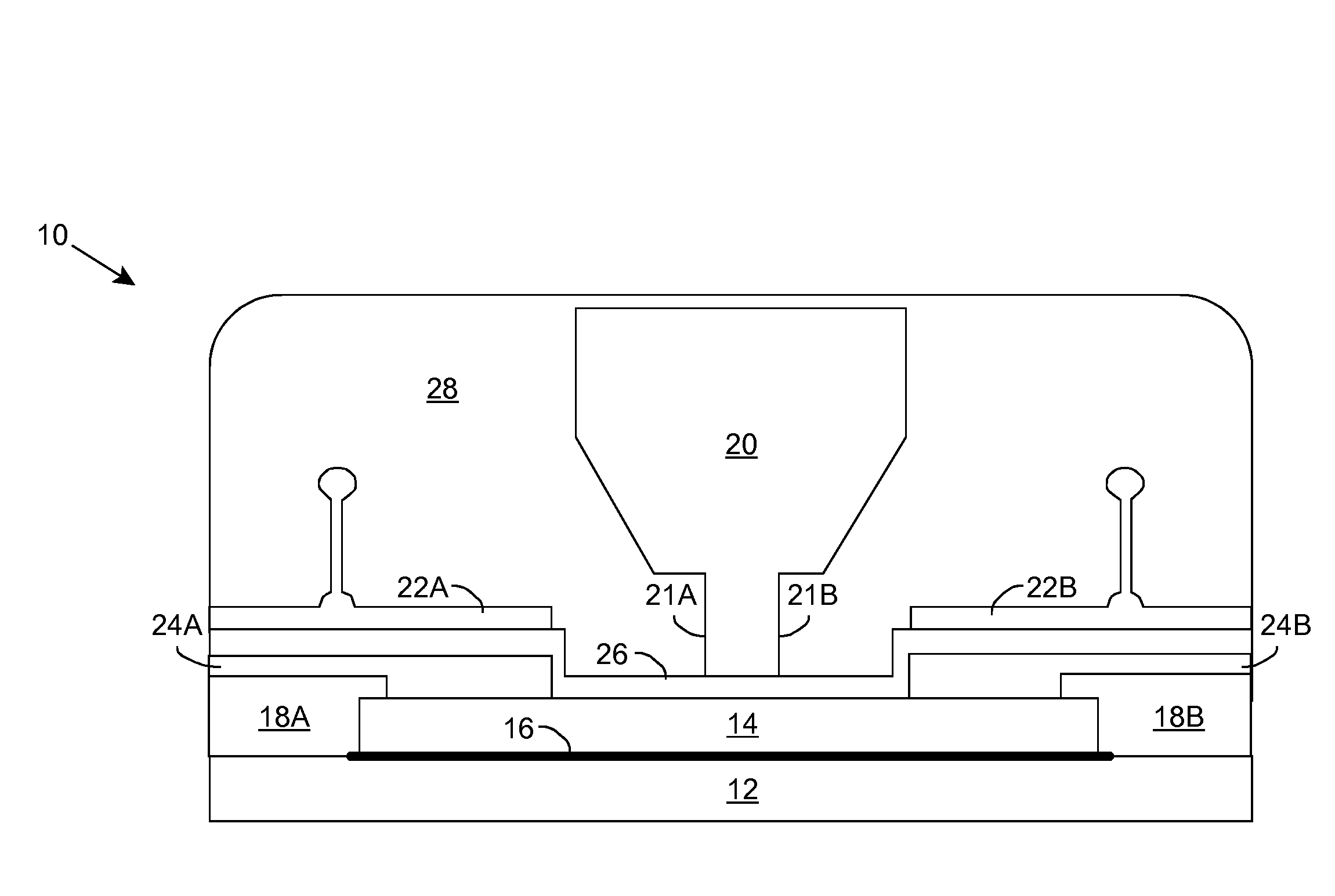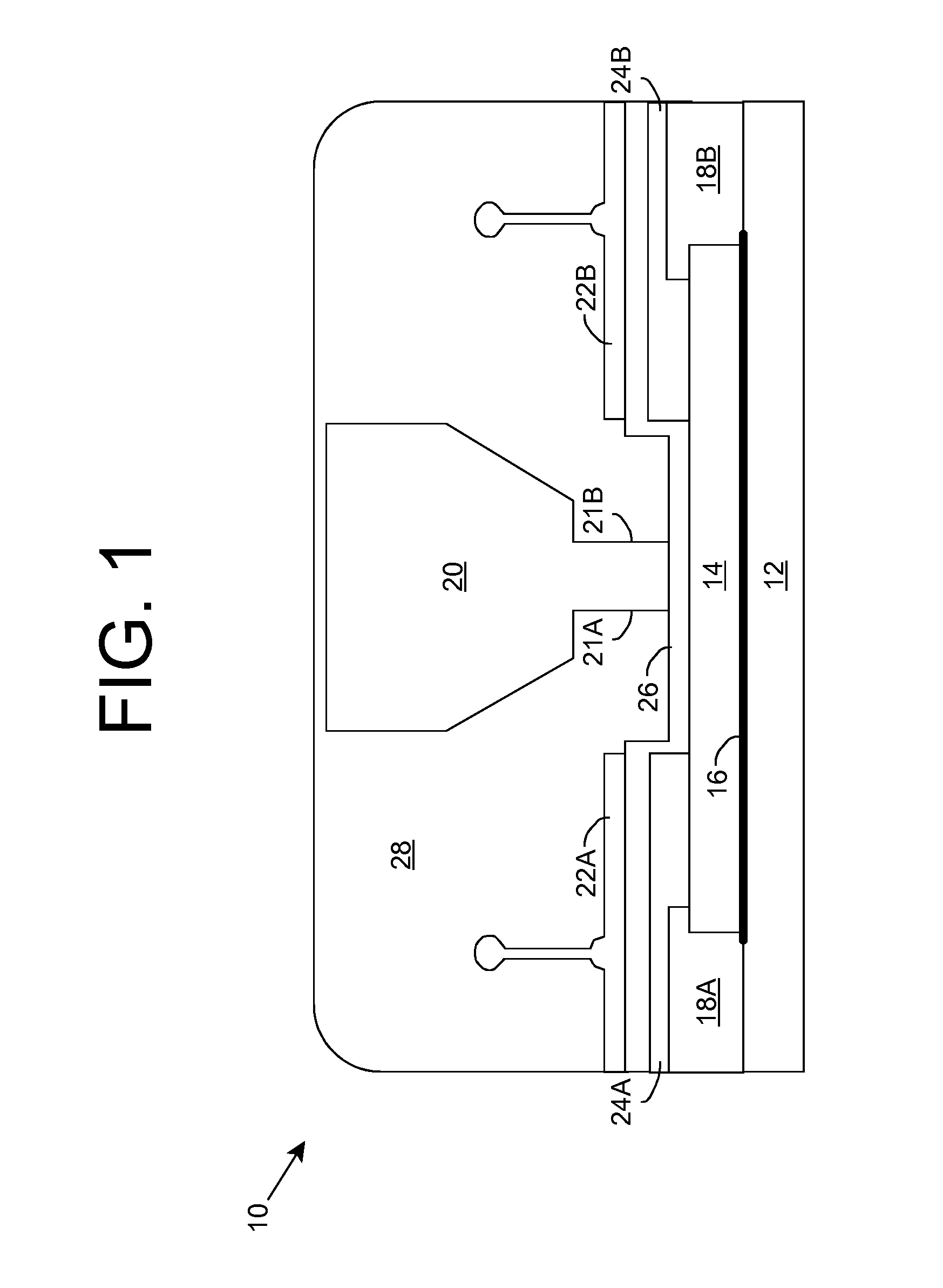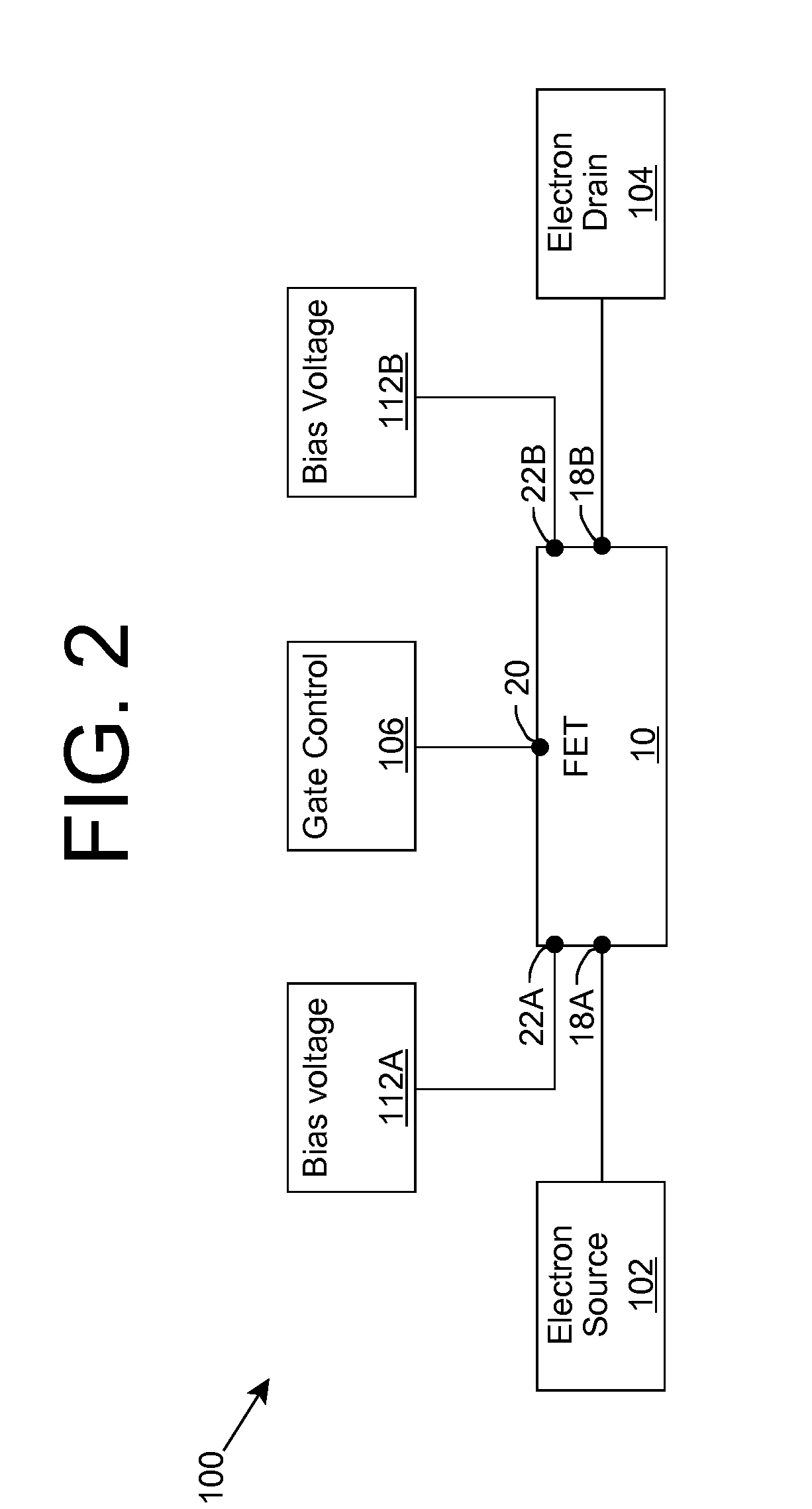Field effect transistor with electric field and space-charge control contact
a field effect transistor and electric field technology, applied in the field of transistors, can solve the problems of insufficient compact and efficient transistor thz devices, device bulkiness, and electronic devices such as photomixers and frequency multipliers cannot deliver radio frequency (rf) power in the micro-watt rang
- Summary
- Abstract
- Description
- Claims
- Application Information
AI Technical Summary
Benefits of technology
Problems solved by technology
Method used
Image
Examples
Embodiment Construction
[0025]As indicated above, aspects of the invention provide a group III nitride-based device capable of achieving terahertz-range cutoff and maximum frequencies of operation at relatively high drain voltages. In an embodiment, two additional independently biased electrodes are used to control the electric field and space-charge close to the gate edges. As a result, an effective gate length extension due to short channel effects is diminished and electron velocity in the device channel is increased. It is understood that for the purposes of the disclosure, Al means Aluminum, As means Arsenic, Ga means Gallium, Hf means Hafnium, In means Indium, O means Oxygen, N means Nitrogen, and Si means Silicon. As used herein, unless otherwise noted, the term “set” means one or more (i.e., at least one) and the phrase “any solution” means any now known or later developed solution.
[0026]Turning to the drawings, FIG. 1 shows an illustrative device 10 according to an embodiment. Device 10 includes a...
PUM
 Login to View More
Login to View More Abstract
Description
Claims
Application Information
 Login to View More
Login to View More - R&D
- Intellectual Property
- Life Sciences
- Materials
- Tech Scout
- Unparalleled Data Quality
- Higher Quality Content
- 60% Fewer Hallucinations
Browse by: Latest US Patents, China's latest patents, Technical Efficacy Thesaurus, Application Domain, Technology Topic, Popular Technical Reports.
© 2025 PatSnap. All rights reserved.Legal|Privacy policy|Modern Slavery Act Transparency Statement|Sitemap|About US| Contact US: help@patsnap.com



